Picture this: a world where metal and plastic seamlessly come together, unlocking endless possibilities for innovation. From mind-blowing engineering marvels to everyday objects, connecting these two materials opens the door to a whole new realm of opportunities. But can metal and plastic truly form a lasting bond? Join me on an exhilarating exploration as we uncover the secrets behind this challenging connection and dive into the fascinating world where different materials unite.
In this blog post, we’ll take a deep dive into the techniques, considerations, and cutting-edge advancements in modern manufacturing that make it possible to connect metal to plastic. Whether you’re an engineer, a DIY enthusiast, or just someone curious about the magic of material fusion, this journey will equip you with knowledge of the groundbreaking methods used to merge these distinct elements.
So, buckle up and get ready to be amazed as we embark on an enlightening adventure of connecting metal to plastic, one bond at a time.
What is Metal and Plastic?
Contents
- 1 What is Metal and Plastic?
- 2 Adhesives for Connecting Metal and Plastic
- 3 Fasteners for Connecting Metal and Plastic
- 4 Welding to Connect Metal and Plastic
- 5 Factors to Consider When Connecting Metal and Plastic
- 5.1 Compatibility – The Love Connection:
- 5.2 Surface Preparation – Cleanliness is Next to Bondliness:
- 5.3 Adhesive Selection – Finding the Perfect Glue Match:
- 5.4 Mechanical Fastening – Reinforcing the Connection:
- 5.5 Thermal Expansion – Love Can Survive Temperature Changes:
- 5.6 Joint Design – The Architect of Strong Connections:
- 5.7 Environmental Factors – Weathering the Storm:
- 6 Temperature Resistance and Chemical Resistance of Adhesives
- 7 Environmental Conditions for Welding
- 8 Consulting Experts or Conducting Research Beforehand
- 9 Conclusion
Metal and plastic, two versatile materials, play vital roles in our daily lives and numerous industries. While each possesses distinct attributes, they can be intertwined through various methods. This article delves into the captivating realm of metal and plastic, exploring their unique properties, advantages, and the different techniques used to connect them seamlessly.
Metal – The Powerhouse of Strength and Durability:
Metal, a formidable material renowned for its toughness and endurance, exists in various alloys comprising different metallic elements. Its inherent hardness, strength, and durability make it indispensable in multiple applications.
Metals exhibit exceptional thermal and electrical conductivity, facilitating efficient heat and electricity transfer. Moreover, metals possess malleability and ductility, enabling them to be easily molded into diverse structures. Steel, aluminum, iron, copper, and brass are familiar examples of metals.
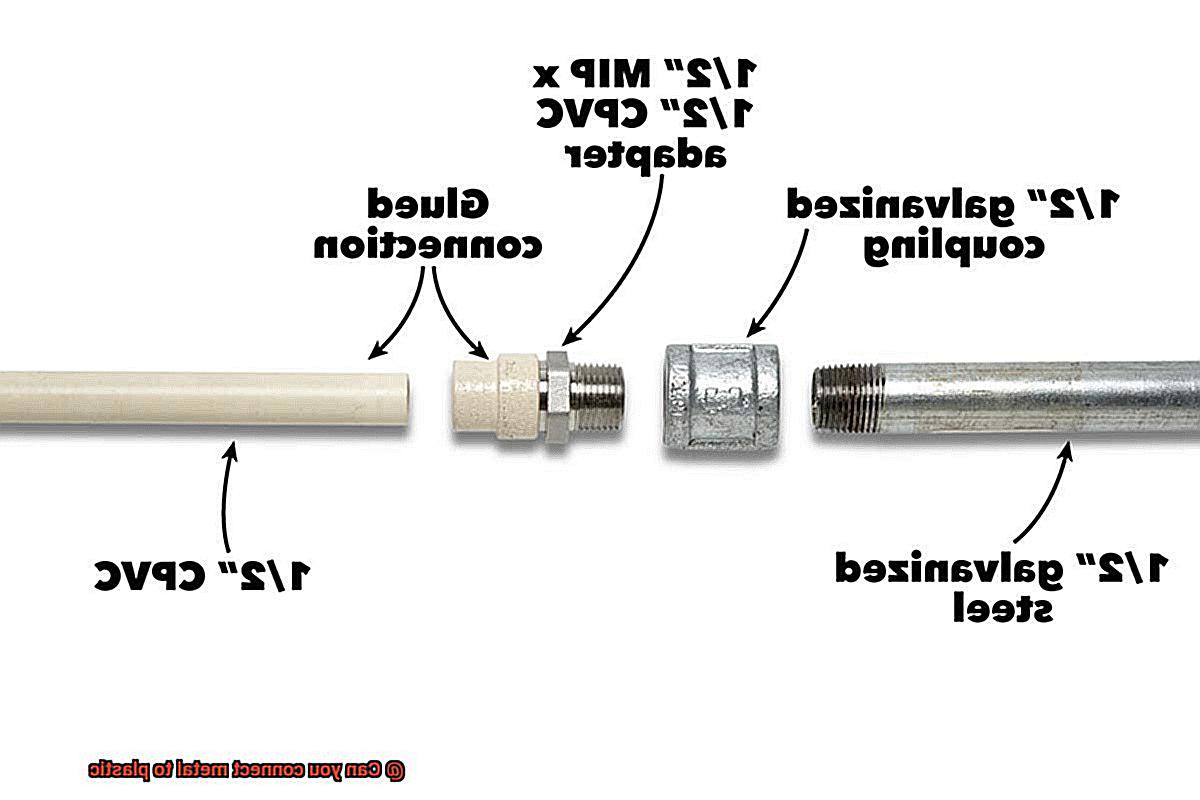
Plastic – The Versatile Synthetic Wonder:
Plastic, a synthetic material derived from polymers, is a marvel of versatility. Polymers consist of large molecules composed of repeating units called monomers. Plastics fall into two principal categories: thermoplastics and thermosetting plastics.
Thermoplastics can be repeatedly heated and molded without significant chemical changes, while thermosetting plastics undergo a chemical reaction during initial molding, resulting in a rigid and heat-resistant structure.
Advantages of Plastic:
Plastics offer numerous advantages over metals that render them highly valuable in countless applications. Firstly, plastics possess lightweight properties, making them ideal for situations requiring weight reduction. Secondly, they exhibit remarkable corrosion resistance, suiting environments exposed to moisture or chemicals. Lastly, plastics excel at electrical insulation properties, ensuring safety in electrical applications.
Connecting Metal to Plastic:
Connecting metal to plastic empowers engineers and designers to unleash boundless possibilities. Several methods are available to achieve this connection:
- Adhesive Bonding: Utilizing adhesives specifically designed for metal-to-plastic bonding creates a robust and enduring connection. Selecting an adhesive compatible with both the metal and plastic is crucial.
- Mechanical Fastening: Employing screws, nuts, bolts, or other mechanical devices to secure metal and plastic components ensures a reliable and sturdy connection. This method is favored when a more resilient and easily reversible link is required.
- Welding Techniques: Techniques like ultrasonic welding and laser welding employ heat and pressure to forge a bond between metal and plastic. However, welding necessitates specialized equipment and expertise, and not all plastics are suitable for this method.
Adhesives for Connecting Metal and Plastic
In this blog post, we will delve into the different types of adhesives that make this magical bond possible. So, put on your safety goggles and embark on this adhesive adventure with us.
Epoxy – The Versatile Wonder:
First up is epoxy, a true superhero in the adhesive world. With exceptional bonding strength and versatility, epoxy effortlessly brings together a wide range of plastics like ABS, PVC, and polycarbonate with metals such as aluminum, steel, and brass. Through chemical bonds, epoxy transforms mere surfaces into a powerhouse of connection. Whether you’re building a shiny new gadget or a sturdy automotive component, epoxy is your go-to adhesive.
Cyanoacrylate – The Instant Marvel:
Next on our list is cyanoacrylate, also known as super glue or instant adhesive. This fast-acting wonder forms an instant bond when it encounters moisture on the surfaces being bonded. Its high strength capabilities make it perfect for joining plastics like polystyrene, acrylics, and polyurethane with metals. Whether you’re in a hurry to complete your DIY project or need a quick fix for your broken plastic or metal item, cyanoacrylate is here to save the day.
Polyurethane – The Flexible Champion:
Last but not least, we have polyurethane-based adhesives, the flexible champions of metal-to-plastic bonding. These adhesives are designed to withstand impact and vibration, making them ideal for applications that require movement or stress resistance. With their ability to bond a wide range of plastics to metals while offering excellent resistance to temperature fluctuations, polyurethane-based adhesives reign supreme in the adhesive game.
The Key to Success: Surface Preparation:
Before embarking on your adhesive adventure, remember the importance of proper surface preparation. Clean, dry, and contaminant-free surfaces are crucial for achieving a strong and durable bond. Some plastics may require additional treatment, such as roughening or priming, to enhance adhesion. Give your materials the TLC they deserve before applying your chosen adhesive.
Conclusion:
In the enchanting world of metal and plastic adhesives, epoxy, cyanoacrylate, and polyurethane-based adhesives reign supreme. Each type possesses unique qualities and strengths, ensuring a reliable bond between these two distinct materials. By understanding the characteristics of each adhesive and considering the specific requirements of your project, you can unlock a world of possibilities in metal-to-plastic bonding.
Fasteners for Connecting Metal and Plastic
Get ready to explore the wide range of fasteners that make this magical connection possible. So buckle up, and let’s dive into the fantastic realm of fasteners for connecting metal and plastic.
First on our list is the trusty screw. These tiny heroes create a threaded connection that holds metal and plastic together in a tight embrace. With different sizes and lengths available, screws offer versatility for various applications. Just remember to choose the right screw type that suits both the metal and plastic materials you’re joining.
Next up, we have the rivet, a permanent fastener that creates an unbreakable bond between metal and plastic. Picture a cylindrical shaft with a head on one end and a tail on the other. To install a rivet, you drill a hole through the materials being joined and insert the rivet. Then, you deform or “set” the tail to secure it in place, creating a solid connection between the metal and plastic.
We’ve got bolts, nuts, washers, and clips. These unsung heroes apply pressure or tension to hold metal and plastic together, silently doing their job to keep things in place.
Now, you might be wondering about glue. Ah, my friend, glue is indeed a viable option for connecting metal and plastic. Adhesives can create a strong bond between these two materials, sticking them together like best friends forever.
Epoxy, cyanoacrylate (also known as instant magic), and polyurethane (the flexible champion) are just some of the adhesive options available. Each adhesive has its own strengths and weaknesses, so choose wisely based on your specific needs.
Before you dive into this adhesive adventure, remember to give your materials some TLC. Proper surface preparation is key to ensuring a successful bond. Clean the surfaces, roughen them up a bit, and remove any contaminants. This will help the adhesive work its magic and create a strong connection.
So there you have it, my friends – a glimpse into the world of fasteners for connecting metal and plastic. Whether you choose screws, rivets, or even glue, these methods provide a reliable and secure way to join these two materials together. Just remember to consider factors like strength requirements, environmental conditions, and material compatibility when selecting your fastener of choice.
Welding to Connect Metal and Plastic
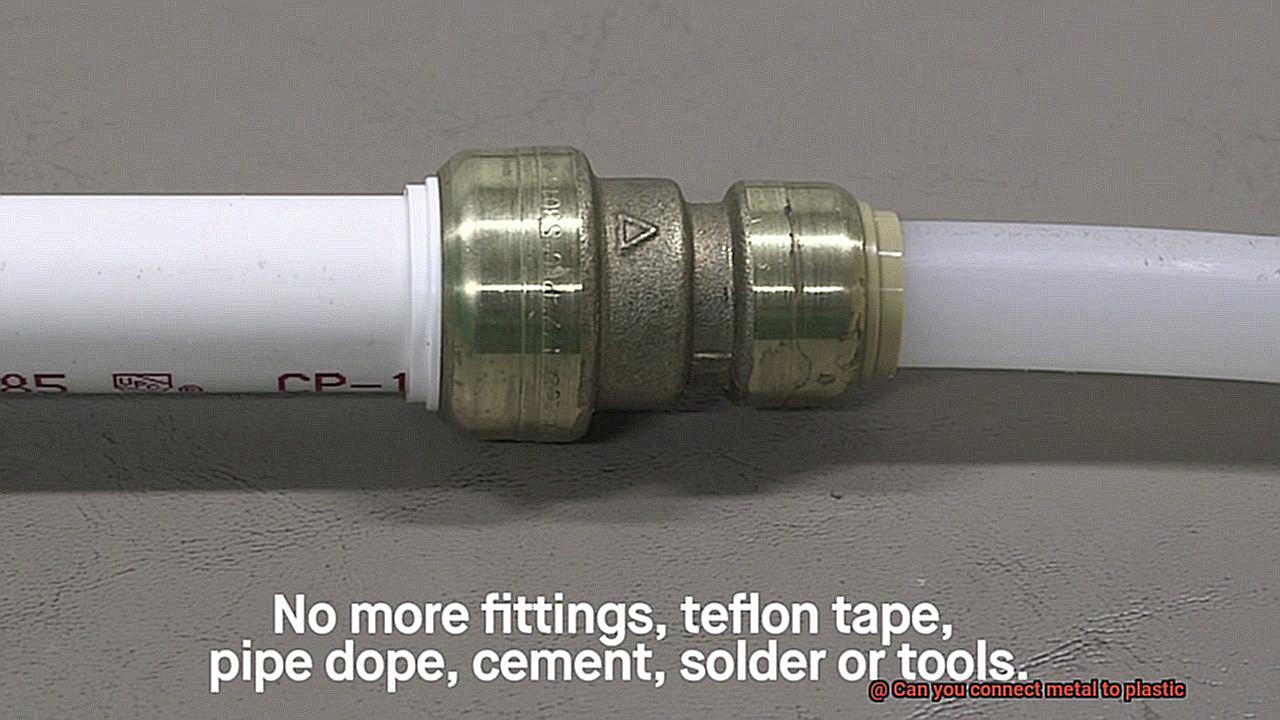
Welding, it turns out, is not just for connecting metal objects. It can also be used to join metal and plastic, creating a bond that defies expectations. Let’s dive into the world of welding and explore its advantages and limitations as a method for connecting these two materials.
Ultrasonic welding stands as one of the most widely used techniques for connecting metal and plastic. Like a symphony of vibrations, this process employs high-frequency waves to melt and fuse the metal and plastic together. Ultrasonic welding proves especially effective with thermoplastics, which possess the unique ability to be melted and reshaped multiple times. So, if you find yourself working with thermoplastics, ultrasonic welding emerges as an exceptional option.
Another method for welding metal and plastic is hot plate welding. This technique involves heating a metal plate and gently pressing it against the plastic component. As both materials cool down, they form an unbreakable bond. Hot plate welding shines when it comes to larger or more intricate parts that simply cannot be joined using ultrasonic welding.
However, not all plastics can be effectively welded to metal. Some plastics, such as polyethylene and polypropylene, possess low surface energy, making it challenging to bond them using traditional welding methods. In such cases, additional surface treatments or adhesives may be necessary to achieve a formidable connection between the metal and plastic.
So, why would you choose welding over other joining methods? Well, welded joints boast superior strength and resilience compared to adhesive bonds. They can withstand impacts and vibrations with unwavering determination. Moreover, welding creates a seamless connection between metal and plastic parts, leaving no weak points or gaps that could jeopardize the integrity of the joint.
Before plunging into the mesmerizing world of welding, consider the specific requirements of your application. Factors like desired joint strength, material properties, and operating conditions should all be taken into account. After all, a well-informed decision is the key to success.
Factors to Consider When Connecting Metal and Plastic
In this blog post, we’ll explore the secrets to making unbreakable bonds between metal and plastic. Let’s dive in.
Compatibility – The Love Connection:
Just like in human relationships, compatibility is key when it comes to connecting metal and plastic. Choose materials that have similar characteristics to ensure a strong bond. Avoid polarity or surface energy conflicts that can hinder adhesion.
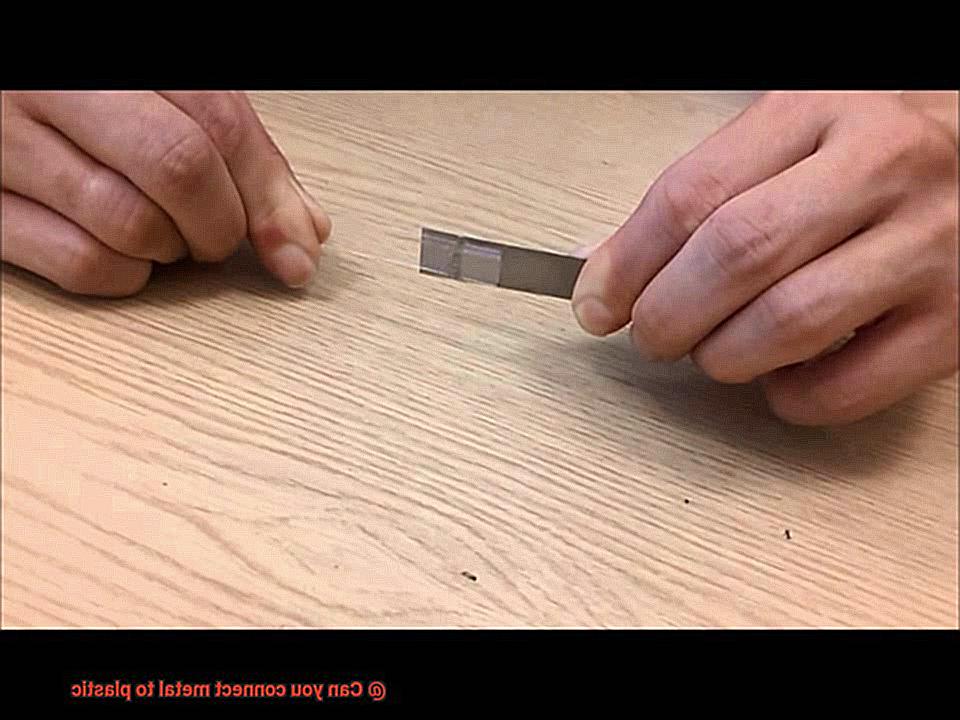
Surface Preparation – Cleanliness is Next to Bondliness:
Before connecting metal and plastic, prepare their surfaces properly. Clean them thoroughly to remove any contaminants that can hinder adhesion. Use solvents to remove dirt, grease, or oxidation. Roughen the surfaces using abrasives or etching techniques to improve bonding strength.
Adhesive Selection – Finding the Perfect Glue Match:

Select the right adhesive for a successful connection. Consider the materials being bonded, required bond strength, temperature resistance, and environmental conditions (moisture or UV exposure).
Mechanical Fastening – Reinforcing the Connection:
In high-stress applications or situations requiring disassembly, use mechanical fasteners like screws, rivets, bolts, or clips alongside adhesives for added strength and stability.
Thermal Expansion – Love Can Survive Temperature Changes:
Metal and plastic have different coefficients of thermal expansion. Consider the operating temperature range and potential thermal cycling when selecting an adhesive or bonding method.
Joint Design – The Architect of Strong Connections:
Design the joint carefully where metal and plastic meet. Consider joint geometry, surface area, and stress distribution for maximum strength and durability.
Environmental Factors – Weathering the Storm:
Consider the environment in which the bonded assembly will be exposed. Factors like humidity, moisture, chemicals, UV exposure, and temperature extremes can affect the bond’s performance. Choose materials and adhesives compatible with the anticipated conditions for long-term durability.
Temperature Resistance and Chemical Resistance of Adhesives
When it comes to connecting metal to plastic, finding the perfect adhesive match is key to creating a bond that is strong, reliable, and unbreakable. In this article, we will explore the crucial role of temperature and chemical resistance in adhesives for metal to plastic bonding. Get ready to dive into the secrets that make adhesive “glue matches” so powerful.
Temperature Resistance:
Picture a scorching summer day or the intense heat emanating from an engine. In these extreme conditions, you need an adhesive that can handle the heat. High-temperature adhesives are specifically formulated to resist heat and maintain their strength even at elevated temperatures. Industries such as aerospace and automotive rely on these adhesives where components face extreme heat during operation.
To find your perfect adhesive match, look for its maximum operating temperature or service temperature. This value represents the highest temperature at which the adhesive can maintain its bond strength without degradation. Choose an adhesive with a service temperature that surpasses the expected operating temperature of your metal-plastic connection for optimal performance.
Chemical Resistance:
Chemicals, solvents, and oils can be formidable foes when it comes to bonding metal to plastic. That’s why chemical resistance is another critical aspect to consider in adhesives. Different adhesives offer varying levels of resistance to specific chemicals, so it’s important to select one that can withstand exposure without compromising its bond strength.
Look for adhesives that are compatible with the chemicals or substances likely to come into contact with your bonded joint. Some adhesives offer excellent resistance to a wide range of chemicals, making them ideal for applications in chemical processing plants and laboratories.
The Perfect Match:
While some adhesives excel in temperature resistance, their chemical resistance might be limited. Therefore, evaluating both aspects is crucial when selecting an adhesive for metal to plastic bonding. Consider the type of metal and plastic, the intended application environment, and any specific requirements or regulations.
To ensure success, consult adhesive manufacturers or experts in the field. Their expertise can guide you in finding the perfect adhesive match for your specific application.
Environmental Conditions for Welding
Creating a strong and durable connection between metal and plastic through welding is a common practice. However, before diving into the welding process, it’s crucial to understand the environmental conditions that play a significant role in ensuring successful and long-lasting welds. In this article, we will explore the key factors and precautions to consider, allowing you to achieve optimal results.
Temperature:
Finding the perfect temperature range is paramount when welding metal to plastic. Both materials have different melting points, requiring a delicate balance for effective bonding without causing damage. The temperature needs to be high enough to melt the plastic without degradation or harmful fumes while ensuring proper fusion of the metal.
Humidity:
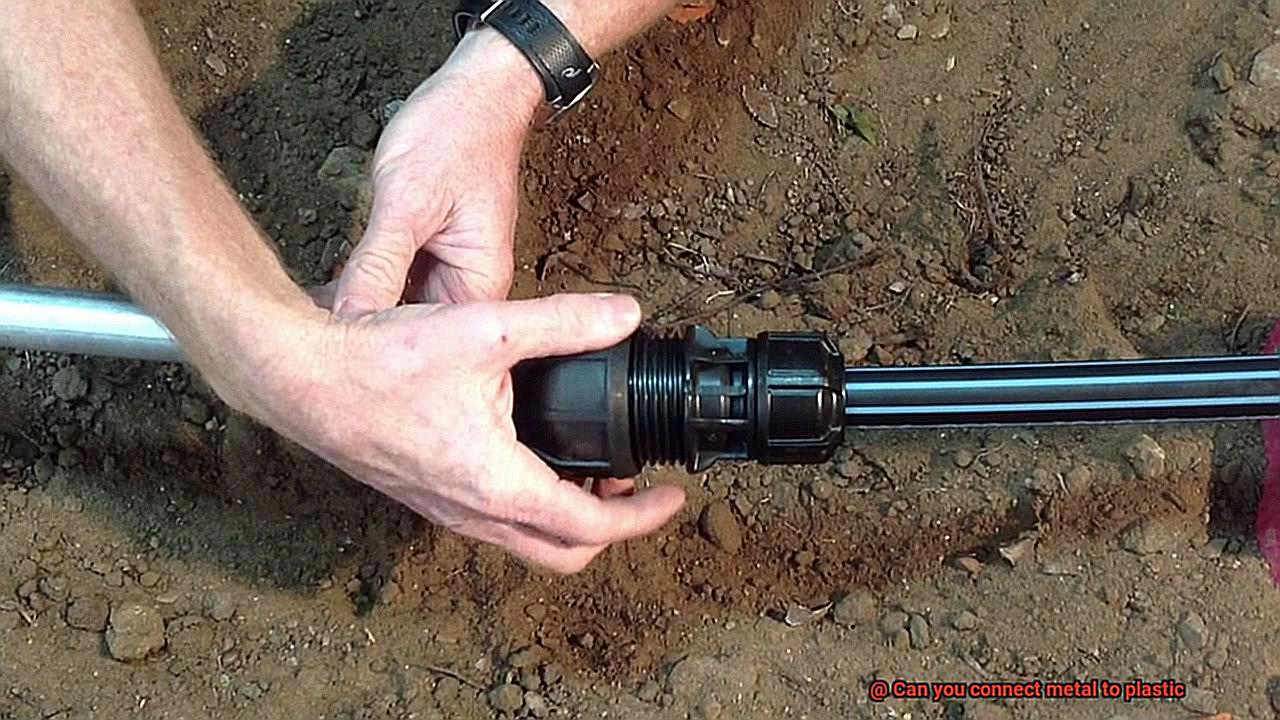
High humidity levels can wreak havoc on the quality of welds by introducing moisture. This can lead to weak bonds or corrosion over time. To avoid these issues, it is essential to perform welding in a controlled environment with low humidity levels. Adequate ventilation and air circulation help remove any moisture or fumes released during the welding process.
Contaminants:
Dust and other contaminants in the air can disrupt the welding process, resulting in poor adhesion between the metal and plastic. To prevent this, it is crucial to work in a clean and dust-free environment. Utilizing air filtration systems or wearing proper personal protective equipment helps maintain a pristine working area.
Lighting:
Accurate and precise welds require proper lighting conditions. Insufficient lighting can lead to errors or incomplete fusion between the metal and plastic. To ensure optimal visibility during the welding process, work under well-lit conditions or use additional lighting sources like spotlights or adjustable lamps.
Safety Precautions:
Safety should always be a top priority when working with welding equipment. The high temperatures involved and potentially hazardous tools and materials demand caution. Wearing protective clothing, gloves, and eye protection is essential. Creating a fire-resistant environment and keeping fire extinguishing equipment readily available prevents accidents or mishaps.
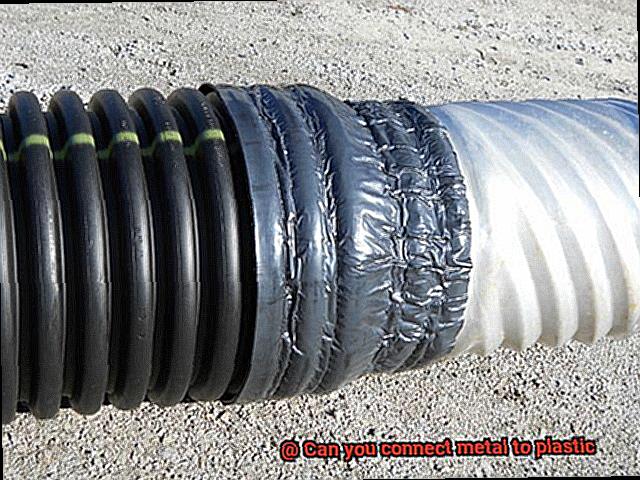
Consulting Experts or Conducting Research Beforehand
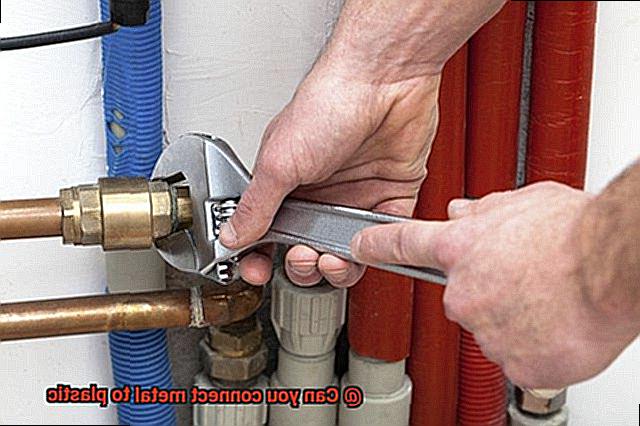
- Seek advice from engineers, materials scientists, and experienced professionals.
- Gain insights into challenges and considerations of connecting metal to plastic.
- Receive recommendations on the most effective bonding techniques.
Conducting Thorough Research
- Gather information from scientific papers, industry reports, case studies, and expert articles.
- Ensure accuracy and validity by relying on reliable and reputable sources.
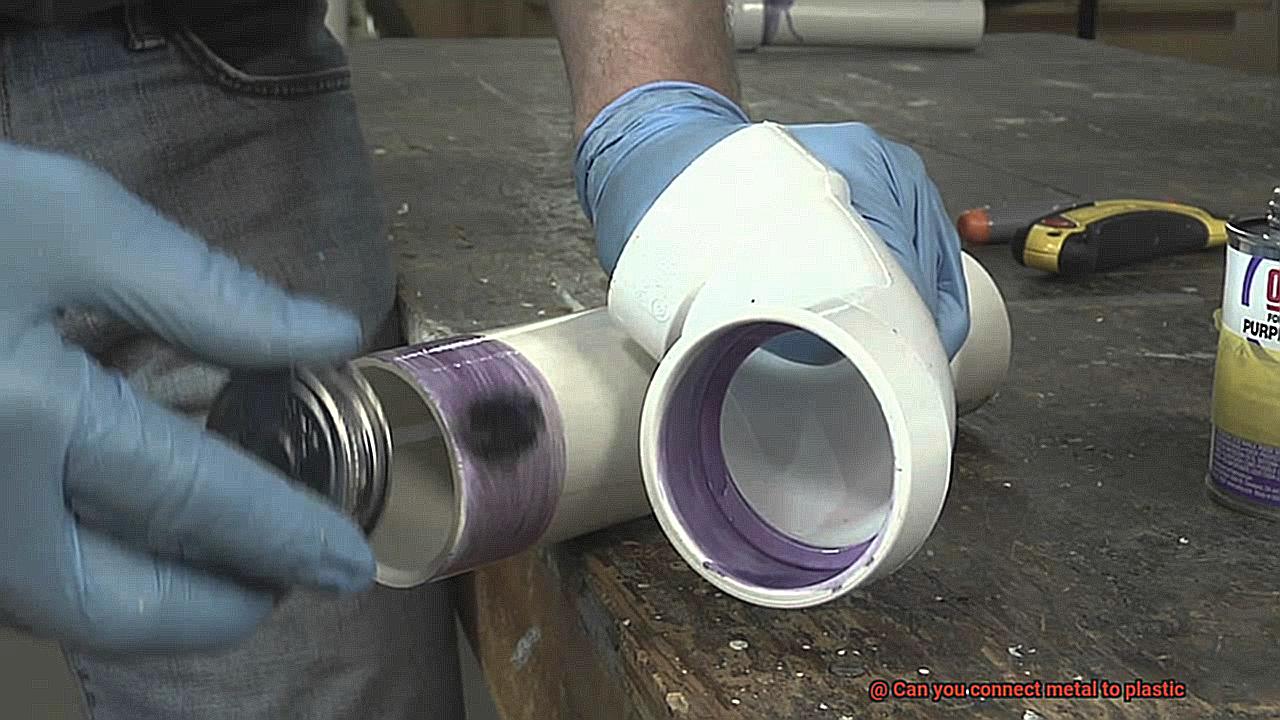
Understanding Material Properties
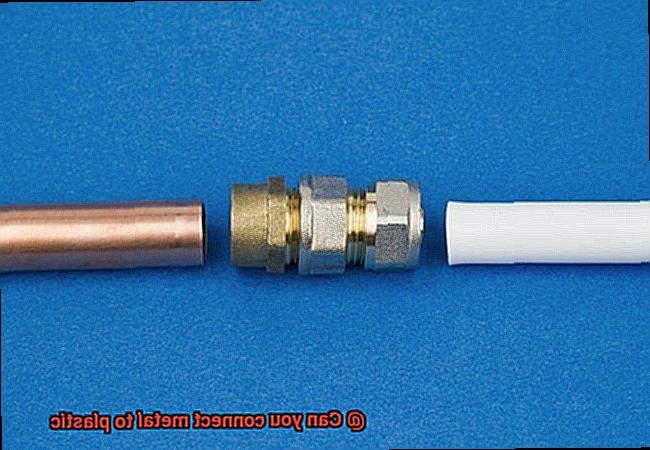
- Explore different types of metals and plastics that can be joined together.
- Dive into physical and chemical properties of both materials.
- Consider factors affecting compatibility and adhesion strength.
- Assess surface characteristics and their impact on bond success.
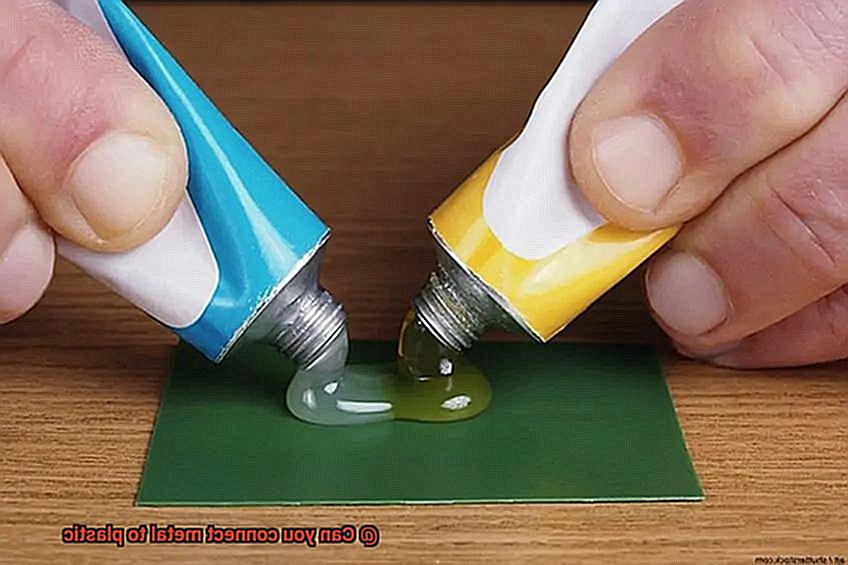
Exploring Bonding Techniques
- Compare mechanical fastening techniques (screws, rivets) vs. adhesive bonding.
- Weigh advantages and limitations of each method.
- Discover specialized glues and epoxy resins for adhesive bonding.
xBweTzS0vr0″ >
Conclusion
In conclusion, it is indeed possible to connect metal to plastic. This opens up a world of possibilities for various industries, from automotive to electronics. By utilizing effective bonding techniques and specialized adhesives, metal and plastic can be securely joined together.
The key lies in selecting the right adhesive for the job. There are specific adhesives designed specifically for bonding metal to plastic, ensuring a strong and durable connection. These adhesives have properties that allow them to adhere well to both materials, creating a reliable bond that can withstand various stresses and strains.
One common method used is through the use of epoxy adhesives. These adhesives are known for their high strength and versatility. They work by chemically bonding with both the metal and plastic surfaces, creating a strong molecular connection.
Another technique is ultrasonic welding, which utilizes high-frequency vibrations to generate heat and create a bond between metal and plastic parts. This method is commonly used in industries where precision and speed are crucial.
Furthermore, mechanical fasteners such as screws or rivets can also be employed to connect metal and plastic components. These fasteners provide additional stability and strength to the joint.
It is important to note that connecting metal to plastic requires careful consideration of factors such as surface preparation, compatibility of materials, and environmental conditions. Proper cleaning and treatment of the surfaces before bonding are essential for achieving optimal results.
In summary, while it may seem challenging at first glance, connecting metal to plastic is indeed possible with the right techniques and materials. With advancements in adhesive technology, industries have been able to achieve reliable connections that meet their specific requirements.






